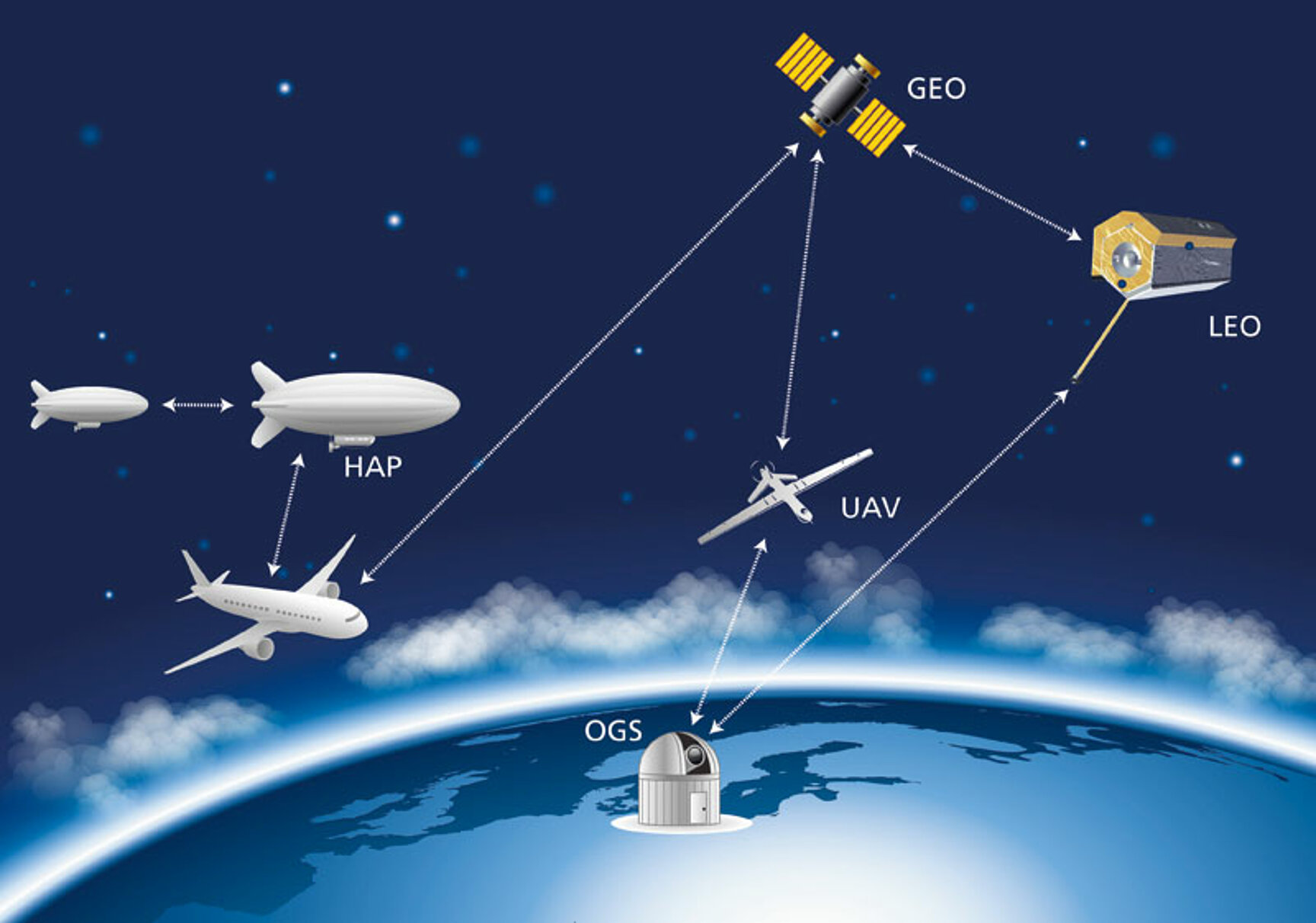Communication technologies are also advancing with the modernization of Artificial Intelligence and satellite technologies. One such technology that is likely to modernize satellite operations and communication is Free Space Optical Communication (FSO). FSO is more advanced and offers lower latency than traditional communication methods that use radio frequency, as data is transmitted via lasers instead of radio frequencies. These benefits put Free Space Optical at the forefront of becoming revolutionary towards satellite communication in Low Earth Orbit (LEO). FSO enables real-time data transfer, meeting the demands of numerous applications.
Key Benefits of Free Space Optical Communication for Satellite Technology
Increased Bandwidth with Data Transmission
FSO has the advantage of offering greater bandwidth, especially with transforming satellites to LEOs, as they require increased bandwidth for advanced navigation and observation purposes. The adoption of FSO will make data transfer more accurate and reliable. Also, the utilization of lasers instead of radios will provide further benefits to satellites as radio waves will no longer restrict them. This allows for modernized applications that utilize devices processed in high-speed data transfer, making their usage convenient.
Low Latency for Real-Time Applications
With the reduced latency offered by FSO, accurate and timely data transfer for remote sensing and navigation becomes guaranteed. From a critical operations perspective, enhanced communication with instantaneous data transfer fulfills requirements. The enhanced speed can be attributed to FSO, as it offers near-instantaneous data transfer during crucial operations and with light travelling faster than waves.
Greater Security and Decreased Interference
FSO offers better security compared to RF communication. Unlike RF communication, lasers cannot be jammed or intercepted easily since they are very directional. This is especially true for spacecraft and satellites in Low-Earth Orbit (LEO) orbits, where there are concerns about interference from space debris. The security of satellite communication systems is greatly enhanced by spacecraft interference.
Optimal Space Resources Utilization
FSO systems are more efficient than RF communication systems. In deep-space exploration and remote locations, satellites can use less power to transmit data, making them an attractive option for satellite technology. This is especially true in LEO missions, where power consumption is critical.
Free Space Optical Communication Challenges in Satellite Technology
Atmospheric Disturbance
One of the main obstacles for FSO in satellite communication is atmospheric obstruction. Weather conditions such as fog, rain, and clouds can block or distort optical signals. While this is not as much of a challenge in space technology, where communication is between satellites in orbit, ground-to-space communication still suffers from interruptions caused by atmospheric disturbance.
Beam Tracking and Alignment
FSO communication requires supervision of the movement of lasers set on satellites or spacecraft, as they need to be set in a specific direction. Satellites move all the time, so the optical beam’s tracking is not easy. There is a great need for sophisticated tracking systems for reliable communications, particularly in Low-Earth Orbit (LEO).
Space Debris Disruption
FSO communication can be disrupted by space debris located in Low Earth Orbit (LEO). Optical space debris has the ability to block the path of optical beams, which will cause data transmission interference. This is a problem with multi-space optics over long periods of time for stable communication in space.
Technology Maturity
FSO is relatively new in the satellite technology arena, which is why it is still promising. For many satellite operators, this technology is still under development. More work needs to go into FSO to ensure stable communication with increasingly more prominent satellite constellations and in different regions.
Conclusion
Free Space Optical Communication (FSOC) is revolutionizing satellite technology with its high bandwidth and lower latency. This provides greater security as compared to RF systems. Besides its challenges, it offers massive potential in satellite communication especially for LEO, spacecraft IoT satellites and IoT satellites. FSO has become an essential for satellite communication because of technological progress.
FAQs
What are the benefits of Free Space Optical Communication for satellites?
In terms of real-time data transfer, FSO is vastly superior to RF communications. This makes it especially beneficial for satellite communications.
Are there any challenges regarding optical communication in satellites?
Beam Point alignment, technology maturity, spatial interference and space debris are the challenges associated with communication in satellites.
